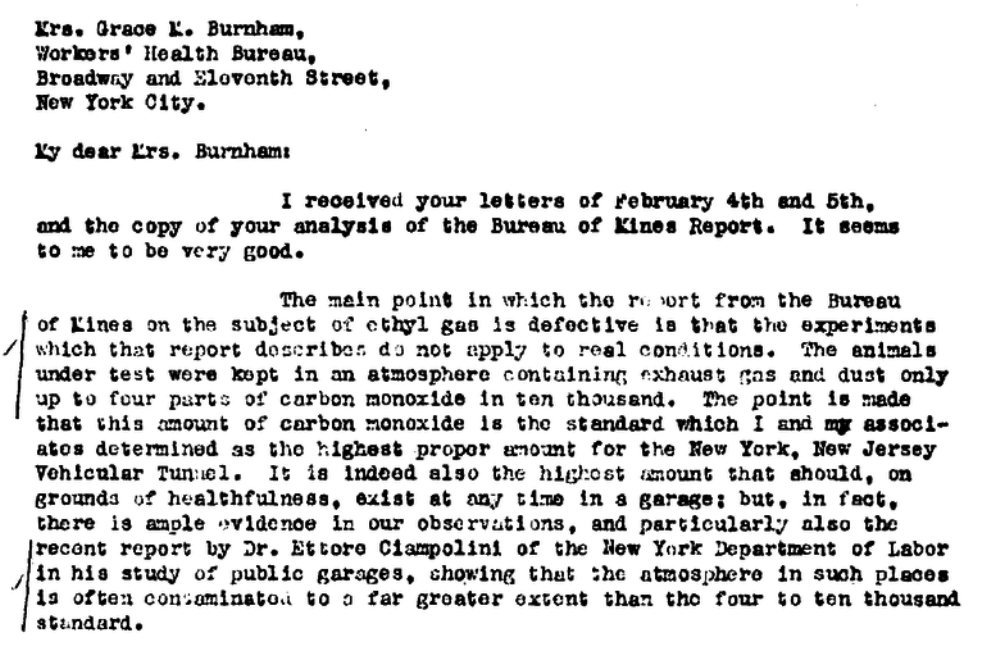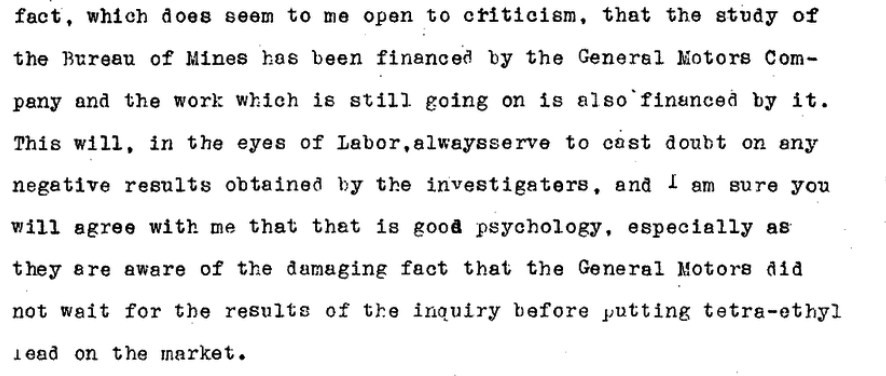Using ToxicDocs in the Classroom: The Tetraethyl Lead Controversy, Part II
This is the second in our series of blog posts highlighting student investigations into tetraethyl lead using ToxicDocs primary sources. Tetraethyl lead was added to gasoline beginning in the 1920s through the 1960s despite the serious concerns of public health officials. Check out the first post in the series here. We will continue posting student research over the coming days, piecing together a more complete picture of the TEL controversy and demonstrating how ToxicDocs can be used in the classroom.
Today's contribution by Alyson Dennis, an Barnard biology major in the class of 2019, uses ToxicDocs to explore the medical, scientific, and public health communities' positions on tetraethyl lead as it emerged as a gasoline additive in the 1920s.
After reading this letter, it is clear Dr. Yandell Henderson believes that tetraethyl lead (TEL) is a harmful substance that should not be used in gasoline. Dr. Henderson writes that a Bureau of Mines report on the substance is flawed as it was not performed under real life conditions and that TEL is in fact harmful. I decided to research Henderson's background, the historical context of this event, and the Bureau of Mines report. While doing these searches, I came across other documents that enlightened my initial understanding of the letter.
I first researched Dr. Henderson's background and discovered that during this time, he was a professor of physiology at Yale University's medical school. In 1911, he was appointed to be in charge of the investigation of the U.S. Bureau of Mines to protect miners from harmful gases. The importance of this job only increased because of World War I's introduction of chemical warfare. Thus, the nature of this war caused many to feel wary about gases, which lead to an investigation of such gases. TEL was one of the gases under scrutiny. This information helped me contextualize why TEL became a subject of contention and debate during these years.
Looking through toxidocs.org, I found the document that re-sparked this conversation amongst scientists and doctors regarding TEL's toxicity.
On February 2nd, 1925, the New York State Department of Health issued an official statement (page 5) that prohibited TEL for sale to the public yet allowed it in "refineries, bulk stations, or filling stations." Just from reading this statement, I questioned why it is allowed in filling stations but not for public use. Because of this statement, it seemed that for public use TEL was unsafe but the Department of Health seemed to not care about the safety of the workers in the "refineries, bulk stations, or filling stations."
I then found a thread of letters regarding the toxicity of TEL. The letter I originally analyzed was just one of the letters in this thread. Looking at the letters regarding this issue, I discovered that there was an investigation done by the Bureau of Mines that was financed by the General Motors Company (pages 7 and 8). Moreover, I discovered that, according to Alice Hamilton, General Motors "did not wait for the results of the inquiry before putting tetra-ethyl lead on the market." Therefore, even after considering that Henderson proved the Bureau of Mines research was done under flawed experimental conditions, the report holds still less validity.
After further investigation in the Public Health Bulletin of June 1926, I discovered that the letters I found were instrumental in completely discontinuing TEL's sale on May 5th 1925, though over 300,000,000 gallons had already been distributed.
*We will be posting more student findings on tetraethyl lead over the next few weeks!
*


